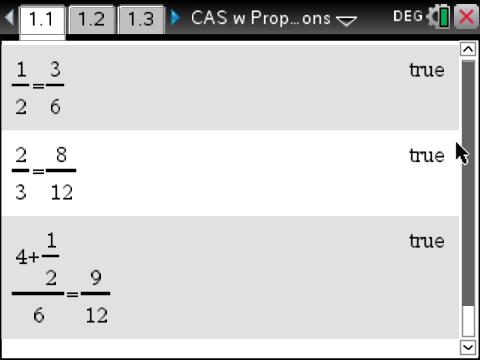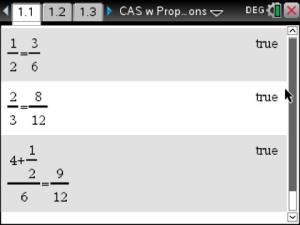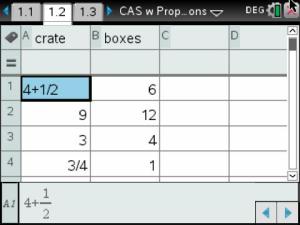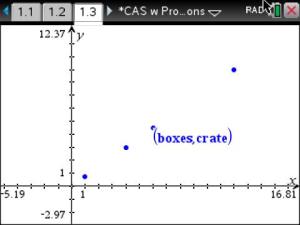Real STEM can sometimes be hard to implement in a regular math classroom, but it can be done with a little planning. It also helps to get a science teacher involved for some topics to consider and help with the scientific concepts that are not covered in math. One STEM project I use in my class is a hydroponic garden.
For those die-hard gardeners that are familiar with this method, ours is more aeroponic than aquaponic. For those teachers who want the plants to actually produce no matter what the students do to it, you may want to purchase an all-in-one kit like Miracle Gro has; but if you want the students to really work for the product, let them start from scratch. “How does math play into this?” you may ask, but I promise you will be amazed. I have used both the all-in-one kit and the “from scratch” kit. The “from scratch” kit is just a Rubbermaid container, fish tank pump, small baskets to hold the plants, some purchased growing medium, lights, and seeds. You can find this setup on the internet along with hundreds of others. Mine holds 6 baskets so 6 groups of four can work with one set up.
Now for the math!
It seems growing plants in this method takes lots of measurements and applying the right solutions. First most plants need the temperature to stay between 55°F and 75°F. How many of your students can read an old-fashioned thermometer? Think vertical number line. Here is a real world situation where students can apply the number line. The thermometer has tick marks between the whole number so the students can study decimals. It also models inequalities since the red line needs to be between 55 and 75. You can use these discussion questions:
- What values work besides 55 and 75?
- What values would not work?
- What other things can you think of that would use measurements this way?
- How can we control the temperature if it goes outside the boundaries?
Using technology like the CAS you can create a table of collected temperatures over a period of time and graph them to predict what the temperature may do at certain times in the classroom. You can also discuss why it may happen. The TI-Nspire CAS can also use a Vernier probe to read the temperature in real-time for different places in the classroom. Is by the window better or close to the door?
Let’s throw in some percents. The ideal relative humidity for plants is between 30% and 70%. For real outgoing teachers there is a free relative humidity calculator at andrew.rsmas.miami.edu/bmcnoldy/Humidity.html . Or you can get a relative humidity Vernier probe and plug into a computer and use TI-Nspire CAS software to collect the humidity data over time.
How about light spectrums? Certain light spectrums are better for certain plants and this is tied to Watts and Watts is tied to cost. Students can calculate the Watts their plants are using with Ohm’s Power Law (Volts * Amps = Watts). Remember your CAS can manipulate this equation to investigate the different variables. Your students can then investigate how much your hydroponic garden is costing. For example, if it cost $0.05 per KWH and the lights needed to be on for 12 hours a day for 4 weeks, what would the total cost be. Once again tables can be created and graphs plotted to analyze.
Let’s not forget proportions. Hydroponic gardens no matter what the type need the nutrient solution that feeds the plants. Different solutions have different instructions but they are all in ratios. For example, FloraGro uses ¼ tsp/gallon for seedlings. If the container holds 5 gallons of water, how much solution do you add? My students had a higher level of difficulty because the measuring cup we had was in milliliters. The metric ratio was 33 mL/100 L. They had to convert gallons to liters then do the proportion. That TI-Nspire CAS came in handy!
Plants grown using hydroponics grow faster than normal methods but they still take weeks to mature. You can have these in your classroom year around and just use them when ready. If proportions don’t come until November, no problem. If you want to use the thermometer for decimals a month before you do proportions, no problem. The systems can be planted at any time and studied for however long.
Updated Note: Since I wrote this blog Texas Instruments has started posting STEM activities and even offers kits for teachers on their website.



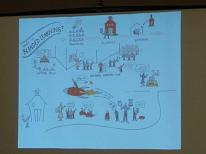
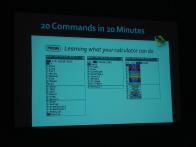 Also, I brushed up on my coding skills using the TI-84 CE and TI-Nspire CX calculators. Coding can be used in so many ways and is a useful skill for all students in today’s world. There were several STEM sessions where we used these coding skills to invent things, make music, and motivate students to
Also, I brushed up on my coding skills using the TI-84 CE and TI-Nspire CX calculators. Coding can be used in so many ways and is a useful skill for all students in today’s world. There were several STEM sessions where we used these coding skills to invent things, make music, and motivate students to 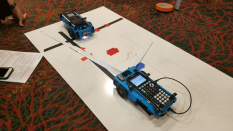 learn. The new
learn. The new 